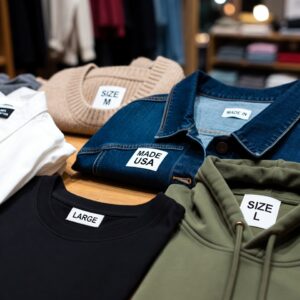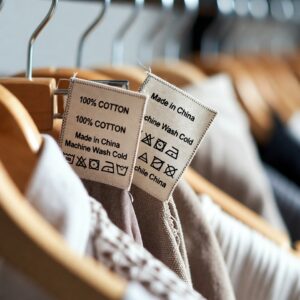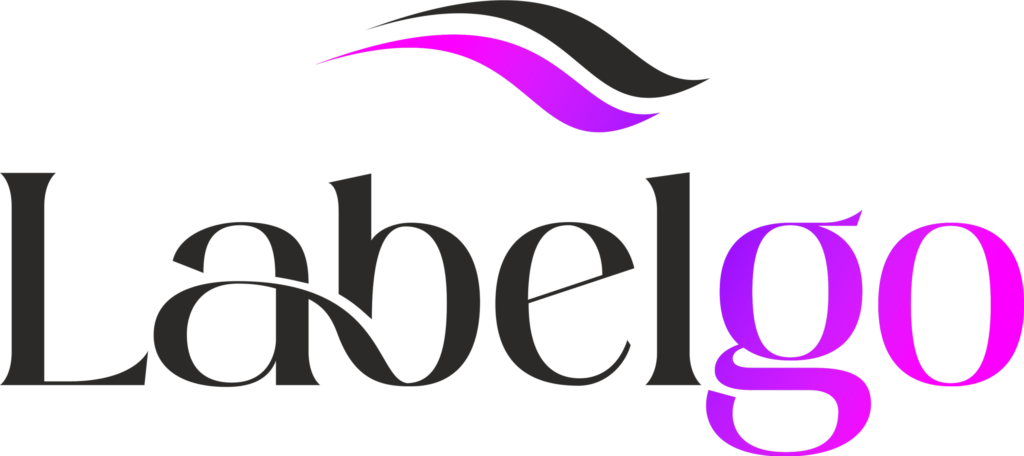Printed labels have evolved from simple informational tags into high-impact branding tools that shape customer perception, elevate product value, and streamline production workflows. In today’s fast-paced fashion ecosystem, printed labels play a central role in communicating brand identity, ensuring regulatory compliance, and supporting sustainable manufacturing practices. For emerging designers and global brands alike, these labels operate at the intersection of creativity, functionality, and efficiency.

1. Branding Impact: Turning Simple Labels Into Strategic Assets
Printed labels serve as the first touchpoint between a garment and the consumer. Their visual clarity, material quality, and design cohesiveness directly influence perceived brand value. By integrating color accuracy, typography hierarchy, and precision printing techniques, fashion brands strengthen recognition and product recall.
For a broader perspective on branding fundamentals, see How Custom Labels Help Build a Recognizable Fashion Brand? and The Importance of Custom Labels in Building Brand Identity.
2. Design Flexibility for Fast Fashion and Boutique Brands
Printed labels offer unparalleled versatility. They accommodate complex graphics, gradients, photographic effects, micro-text, multilingual instructions, and small production runs with ease. This flexibility makes them a preferred choice for:
Capsule collections
Seasonal product drops
Limited-edition collaborations
Private-label production
Brands aiming to refine label design strategy can refer to 5 Common Mistakes to Avoid When Designing Your Product Label and Design Tips for Eye-Catching Woven Labels for complementary insights.
3. Elevated Consumer Experience Through Clarity and Comfort
Modern consumers demand information transparency and comfort. Printed labels excel in both:
Soft-touch materials (satin, cotton, soft polyester) eliminate skin irritation.
High-resolution print ensures sharp care instructions and compliance data.
Minimalist formats align with premium product aesthetics.
To understand the regulatory dimension, review What Are Care Labels and Why Are They Legally Required?
4. Production Efficiency and Cost Optimization
Printed labels create operational advantages across the supply chain:
Fast turnaround times
Cost efficiency for large and small batches
Consistent color management
Compatibility with automated sewing and heat-transfer systems
Their adaptability also supports dynamic e-commerce workflows and short production cycles, enabling brands to scale quickly without compromising consistency.
For insights into digital design, refer to The Benefits of Digital Label Design and Customization Tools.

5. Sustainability and Responsible Material Use
Eco-conscious consumers increasingly evaluate brands based on material transparency. Today’s printed labels can be manufactured using:
Recycled polyester
Organic cotton
Low-impact inks
FSC-certified paper for printed hang tags
When combined with ethical production standards, printed labels reinforce a brand’s sustainability narrative. Explore Why Sustainable Labeling Matters in Modern Fashion and The Environmental Benefits of Using Sustainable Label Materials for a comprehensive view.
6. Integration With Other Label Types
Printed labels function most effectively when used alongside complementary label solutions. Many modern brands combine them with:
Woven labels for durability and prestige
Cardboard hang tags for external branding
Care labels for regulatory transparency
Wristband labels for events and promotional campaigns
For comparative insights, refer to Woven Labels vs. Printed Labels: Which One to Choose? and Cardboard Labels (Hang Tags) and Their Importance in Branding.
7. Storytelling and Brand Engagement
Labels are no longer static identifiers. They communicate brand values, product origins, and production ethics. Printed labels can highlight:
Country-of-origin details
Material composition stories
QR codes for behind-the-scenes production videos
Sustainability commitments
Artist or designer collaborations
To strengthen narrative strategy, see The Art of Storytelling Through Product Labels.
8. Enhancing Global Market Access
Printed labels support global compliance requirements, multilingual packaging, and standardized sizing formats. This ensures seamless entry into international markets and fosters consumer trust across regions.
For additional context, consider A Guide to Standard Size Labels Across Global Markets and Why “Made in [Country]” Labels Still Matter to Consumers.
Conclusion
Printed labels are more than functional components; they are strategic instruments that shape brand perception, communicate value, and empower modern fashion operations. Their adaptability, efficiency, and branding potential make them indispensable in today’s competitive clothing market.
By leveraging high-quality printed labels—and combining them with advanced digital customization tools—brands can deliver a cohesive experience that resonates with consumers, strengthens product identity, and accelerates business growth.
